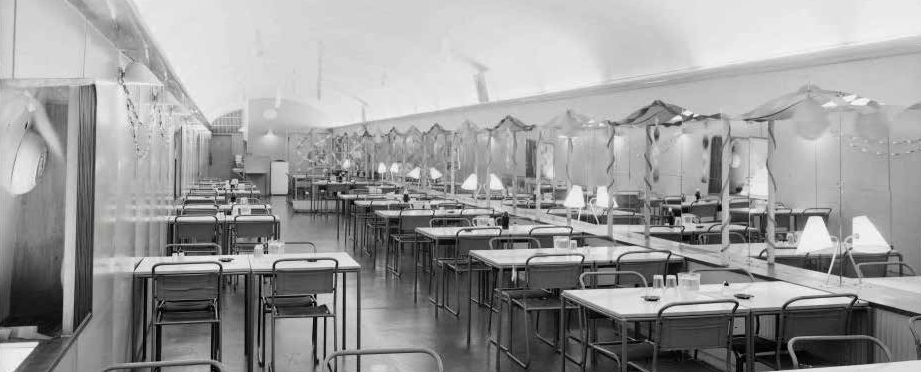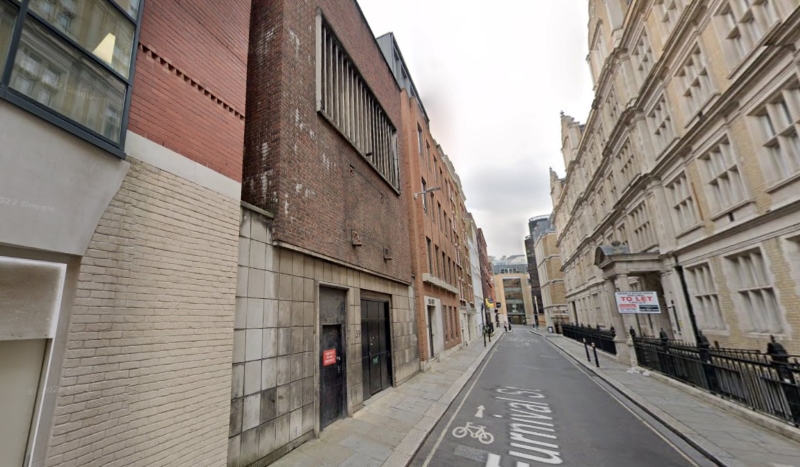Proposals to convert a former government tunnel network under central London into a tourist attraction targeting two million visitors a year have taken a step forward.
The Kingsway Exchange Tunnels beneath High Holborn once served as a communications hub and a base for the Special Operations Executive offshoot of the Secret Intelligence Service – also known as MI6.
In their 1950s and 1960s heyday, the tunnels accommodated up to 200 staff supported by self-contained water and air-conditioning systems. The complex also boasted the deepest licenced bar in London along with a restaurant with mock windows and a recreation room with snooker tables.
The site, which is 40m below street level, reputedly inspired “Q Branch” in Ian Fleming’s James Bond novels.
Developer London Tunnels Ltd’s vision for the 8,000sqm subterranean network is to turn the tunnels into a heritage trail that salutes the site’s 80-year history.
 Staff at work in the Kingsway Exchange Tunnels. Photo: British Telecom archive/Wilkinson Eyre
Staff at work in the Kingsway Exchange Tunnels. Photo: British Telecom archive/Wilkinson Eyre
Much of the communications equipment it contains – such as the transatlantic telephone cable that acted as the “hotline” between Washington and Moscow during the Cuban Missile Crisis – would be preserved.
London Tunnels also plans to develop an arts and culture offer, as well as opening a new bar in the network as part of its £220m proposals, which have now been submitted for planning consent to the City of London Corporation and the London Borough of Camden.
Under the proposals, the tunnels would be accessed from entrances in High Holborn – in the building that once served as the entrance to Chancery Lane Underground Station – and in Furnival Street.
The original tunnels were commissioned by the government in the 1940s to serve as one of eight deep-level air-raid shelters for the public in the capital, however they were never used for that purpose.
In 1944, the shelter was converted to serve as a reserve government headquarters. Immediately after the Second World War, the tunnels were used as a document repository for the Public Record Office, based in nearby Chancery Lane.
From 1951 the network served as a communication exchange for the General Post Office, which was then still a department of state and resposnsible for the nation’s telephone system as well as mail.
The tunnel network was expanded, with the two original 5.1m diameter tunnels augmented by an extension featuring four 7.2m tunnels in an offshoot at its eastern end.
 A canteen in the Kingsway Exchange Tunnels Photo: British Telecom archive/Wilkinson Eyre
A canteen in the Kingsway Exchange Tunnels Photo: British Telecom archive/Wilkinson Eyre
In 1956, the Kingsway Exchange Tunnels became the London terminal of the first transatlantic telephone cable, TAT 1 – which allowed for the site to connect calls between the White House and the Kremlin in 1962 when cold war tensions between the US and Russia peaked.
Communications functions at the tunnels finished in 1990 and the site has been used for storage since. BT Group first launched a bid to sell the site in 2008 but has only recently agreed a deal with London Tunnels.
Last year the company, which is headed by Australian banker Angus Murray and backed by a private equity fund, said its “aspiration” was for the attraction to open in 2027.
 The building on the left is currently the main entrance to the tunnels Photo: Google Maps
The building on the left is currently the main entrance to the tunnels Photo: Google Maps